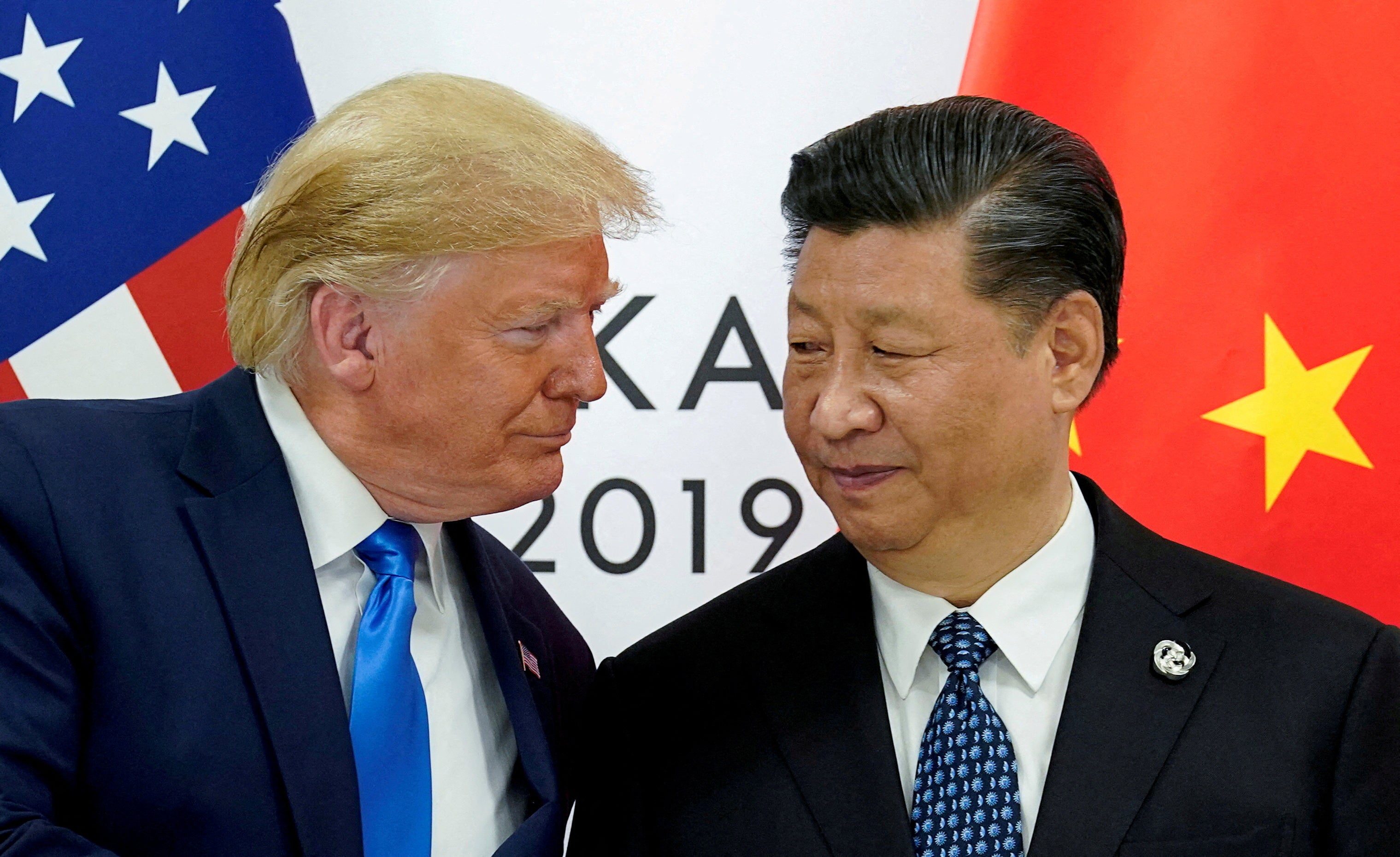President Donald Trump on Wednesday announced that American and Chinese negotiators in London have struck a deal to avert the trade war he had been stoking against Beijing since returning to office in January.
In an early-morning, all-caps post on Truth Social, Trump claimed the deal was “done” pending a “final approval” by him and Chinese President Xi Jinping.
He also said Beijing had agreed to supply “full magnets” and “any necessary rare earths” to American buyers “up front” in exchange for the president dropping his plan to prohibit Chinese students from enrolling at American colleges and universities while adding that the U.S. and China would maintain effective tariff rates on respective imports at 55 percent and ten percent.
“RELATIONSHIP IS EXCELLENT! THANK YOU FOR YOUR ATTENTION TO THIS MATTER!" he said.
Trump’s announcement came following two days of talks in the U.K. capital between Chinese representatives and three top Trump administration officials, Treasury Secretary Scott Bessent, Commerce Secretary Howard Lutnick, and U.S. Trade Representative Jameson Greer.
Li Chenggang, China’s international trade representative who also serves as a vice-minister of commerce, told the state-run Xinhua news service that the American and Chinese sides had come to an agreement in principle regarding a framework to fully implement what had been already agreed to after a prior round of talks in Geneva.
The latest round of talks were meant to shore up what had been a fragile truce between Washington and Beijing in Trump’s trade war following those previous talks in Switzerland after a series of tit-for-tat impositions of export controls threatened to blow up the detente last month.

The U.S. had restricted Chinese access to semiconductors used in computers needed for artificial intelligence, while China had put a wholesale block on the export of rare earth metals used in all sorts of electronic products including the motors and batteries that power electric vehicles.
Amid the rising tensions, Trump and Xi spoke last week in a 90-minute phone call with Chinese president Xi Jinping, which Trump described as a “very good” discussion of “some of the intricacies of our recently made, and agreed to, Trade Deal.”
He had previously complained that Xi was “VERY TOUGH, AND EXTREMELY HARD TO MAKE A DEAL WITH” in a separate Truth Social post which was made as he was reportedly pushing for a leader-to-leader call with his Chinese counterpart.
Trump and other administration officials have been frustrated by what they describe as China’s failure to relax restrictions on the export of rare earth metals, which are used in manufacturing for advanced electric motors and other electronic products, including those with military applications, while China’s government has bristled at a recent decision by the U.S. to impose export controls that will prevent American companies from selling Chinese buyers software used for semiconductor design, and by plans announced by Secretary of State Marco Rubio to to “aggressively revoke visas for Chinese students” who are studying in the U.S.

The meeting between American and Chinese negotiators will take place amid continued uncertainty as to the viability of Trump’s expansive use of tariffs as a Swiss Army knife-type policy instrument under emergency powers he has claimed using a decades-old law, the International Emergency Economic Powers Act.
Last month, a three-judge panel of the U.S. Court of International Trade ruled that President Donald Trump “exceeded his authority” when he imposed his so-called “Liberation Day” tariffs on April 2. The court also struck down the tariffs Trump imposed on Mexican, Canadian and Chinese imports with the stated aim of combatting fentanyl and drug trafficking from those countries.
That decision was put on hold by an appeals court while arguments play out in the case, but Trump and his allies are making plans to use other, more well-defined authorities to continue his use of import taxes as a way of driving manufacturing to return to American shores after decades of globalization and integration of supply chains.
White House officials have been plumbing the depths of the U.S. legal code to find ways to get around judicial orders and carry out the president’s plans despite the rulings of what they call have labeled the “rogue judges’ that have repeatedly ruled against Trump.
Inflation holds steady as data shows how prices are faring after Trump’s ‘Liberation Day’ tariffs
US and China reach deal to ease rare earth mineral export curbs after talks in London
Federal appeals court temporarily reverses decision on Trump’s tariffs
Mapped: the 35 cities where anti-ICE protests have erupted across the US
Inflation holds steady as data shows how prices faring after Trump’s tariffs
LA protests live: ‘Mass arrests’ in Los Angeles after LAPD enforces night-time curfew







